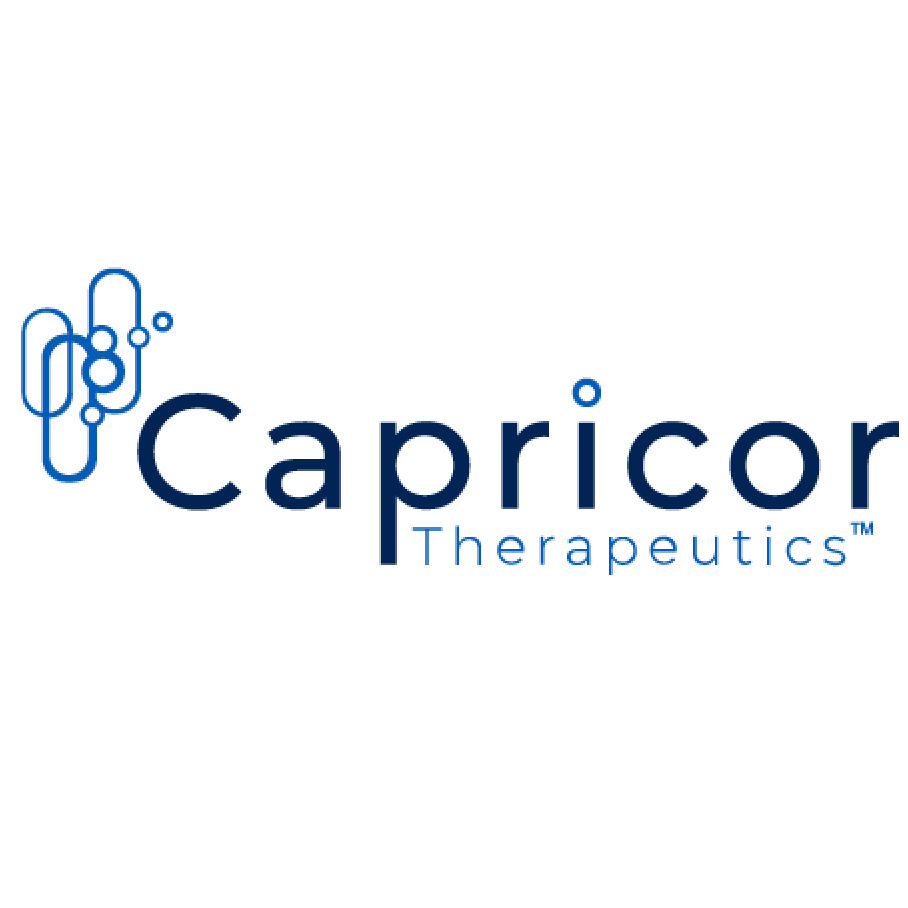预约演示
更新于:2025-05-07
NPRA x NPRB
更新于:2025-05-07
关联
1
项与 NPRA x NPRB 相关的药物作用机制 NPRA激动剂 [+1] |
在研机构- |
在研适应症- |
最高研发阶段终止 |
首次获批国家/地区- |
首次获批日期1800-01-20 |
12
项与 NPRA x NPRB 相关的临床试验NCT03091998
A Phase I Trial to Determine Safety and Efficacy of Chronic Subcu Administration of CD-NP in Heart Failure Patients With Left Ventricular Assist Device Support
The worldwide use of left ventricular assist devices (LVAD), which is mechanical device to improve hemodynamic function, has improved the outcomes of severe heart failure (HF) patients leading to the continued annual increase in the number of LVAD implantations. However LVAD support still results in major complications such as renal failure or gastrointestinal bleeding. The investigators hypothesize that such major complications may be due to endothelial dysfunction induced by the lack of pulsatility, which may be improved by an innovative designer natriuretic peptide, CD-NP. They have demonstrated its favorable actions in animal models as well as humans, and tested its safety in LVAD patients. They hypothesize that CD-NP will have renal and endothelial protective actions through its receptor GC-A and GC-B. Thus, the investigators will test their hypothesis with a highly translational approach to examine CD-NP's role in endothelial and renal protection.
The aim is to determine safety and tolerability together with cGMP activating, neurohumoral modulating and renovascular protective properties of chronic subcutaneous delivery of CD-NP compared to placebo in stable LVAD patients for 3 days.
The aim is to determine safety and tolerability together with cGMP activating, neurohumoral modulating and renovascular protective properties of chronic subcutaneous delivery of CD-NP compared to placebo in stable LVAD patients for 3 days.
开始日期2017-09-30 |
申办/合作机构 |
NCT02603614
A Randomized, Double Blind, Placebo-Controlled, Dose Escalating, Cross Over Designed Study to Assess the Safety and Tolerability, Pharmacokinetics, and Pharmacodynamics of Open-Label, Continuous Subcutaneous Infusion of Cenderitide Via the Insulet Drug Delivery System in Chronic Stable Heart Failure Subjects With Moderate Renal Impairment
CNDP-578-02 is a randomized, double-blind, placebo-controlled, dose-escalation, crossover design trial. Eight evaluable subjects (n=8) with chronic stable heart failure and moderate renal impairment will be randomized (1:1) to receive cenderitide or placebo. Enrolled subjects will begin with Infusion Period A where they will receive up to 7 days of continuous, subcutaneous, dose-escalating infusions of cenderitide or placebo via the Insulet Drug Delivery System. Enrolled subjects will then cross over into Infusion Period B where they will receive up to 7 days of continuous, subcutaneous, dose-escalating infusions of cenderitide or placebo.
开始日期2015-12-01 |
申办/合作机构 |
NCT02359227
A Study Assessing the Safety and Tolerability, Pharmacokinetics, and Pharmacodynamics of Open-Label, Continuous, Stepwise, Dose Increasing, Subcutaneous Infusion of Cenderitide Via the Insulet Drug Delivery System in Subjects With Stable, Chronic Heart Failure
Planned enrollment is approximately twelve subjects with stable chronic heart failure. Enrolled subjects will receive up to eight sequential days of continuous, stepwise, dose increasing, subcutaneous (SQ) infusions of open-label cenderitide via the Insulet Drug Delivery System. Planned infusion rates of cenderitide will be administered to subjects continuously during four, 48-hour infusion periods.
开始日期2015-01-01 |
申办/合作机构 |
100 项与 NPRA x NPRB 相关的临床结果
登录后查看更多信息
100 项与 NPRA x NPRB 相关的转化医学
登录后查看更多信息
0 项与 NPRA x NPRB 相关的专利(医药)
登录后查看更多信息
377
项与 NPRA x NPRB 相关的文献(医药)2025-05-01·Neuroscience
Effect of chronic sustained hypoxia on NPR-A, NPR-B, MAP-2 and GFAP expressions in cerebral cortex and hippocampus
Article
作者: Değer, Necla ; Kuloğlu, Nurhan ; Başaran, Kemal Erdem ; Yakan, Birkan ; Karabulut, Derya
2024-09-12·Endocrine Reviews
Phosphorylation-Dependent Regulation of Guanylyl Cyclase (GC)-A and Other Membrane GC Receptors
Review
作者: Potter, Lincoln R
2024-05-01·Cell and Tissue Research
Paracrine and endocrine pathways of natriuretic peptides assessed by ligand-receptor mapping in the Japanese eel brain
Article
作者: Tsukada, Takehiro ; Wong, Marty Kwok-Shing ; Mukuda, Takao ; Katayama, Yukitoshi ; Ida, Takanori ; Saito, Ami ; Izumi, Tomoki
1
项与 NPRA x NPRB 相关的新闻(医药)2022-10-17
关注并星标CPHI制药在线 每年的10月8日是全国高血压日,高血压是以动脉压升高为主要临床表现的心血管综合征,可损伤重要脏器,导致中风、冠状动脉疾病、心力衰竭和慢性肾衰竭等靶器官的损害。高血压病的发生发展与交感神经系统亢进、肾素-血管紧张素-醛固酮系统(RAAS)激活、肾 脏排泄功能障碍、血管内皮损害、胰岛素抵抗及家族遗传等多种因素相关。目前,高血压的治疗仍以药物治疗为主,已上市的抗高血压药物主要包括钙通道阻滞剂(CCB),血管紧张素转化酶抑制剂( ACEI) 、血管紧张素受体拮抗剂( ARBs)、血管紧张素受体脑啡肽酶抑制剂(ARNI)、噻嗪类利尿剂和β-受体阻滞剂等6类。 高血压的发生机制是抗高血压新药研发的理论基础,目前新药的研发多集中在新作用机制或新靶点方面,双通道阻断型CCB、直接肾素抑制剂、ETA/ETB 双重内皮素受体拮抗剂、AT1 抑制剂、APA 抑制剂、钠钾离子通道转换酶抑制剂、利钠肽受体激动剂、DβH抑制剂、sGC刺激剂等均是未来抗高血压新药的发展方向。 1、双通道阻断型CCB CCB是临床常用的抗高血压药物之一,以二氢吡啶类(DHP CCBs)为主,选择性作用于电压依赖性L-型 Ca2+通道,常用药物有硝苯地平、氨氯地平等。但CCB 可引起外周水肿、面部潮红、心动过速等不良反应,这些不良反应容易导致患者依从性差,无法有效控制血压。目前,已有研究证实新型DHP CCBs 如 efonidipine、benidipine 和 nilvadipine 能够部分阻滞L-型和T-型钙离子通道。随机化临床试验发现,与单作用于L-型 Ca2+通道药物相比,efonidipine 和 benidipine 对 L-型钙通道的阻滞作用相似,而外周水肿和反射性心动过速发生的概率更低。因此,相比于 L-型钙通道阻滞剂,双重阻滞L-和 T-型钙通道对高血压的治疗效果可能会更好,能够更好地保护心血管和肾脏,减少外周水肿等不良反应的发生。 2、直接肾素抑制剂 RAAS在高血压的发生发展中具有重要作用,肾球囊细胞分泌的肾素可将肝脏合成的血管紧张素原转变为血管紧张素Ⅰ(AngⅠ),后者在血管紧张素转化酶(ACE)的活化作用下转化为血管紧张素Ⅱ(AngⅡ)。AngⅡ主要作用于血管紧张素受体亚型1(AT1),具有促进血管收缩、水钠潴留、增强交感系统的活性、导致血压上升的作用。直接肾素抑制剂能够直接抑制肾素的产生,降低体内Ang Ⅱ浓度,拮抗Ang Ⅱ的升压作用。 阿利吉伦是目前唯一上市的直接肾素抑制剂,其单独使用或与其他药物联用治疗高血压均安全有效。但是,阿利吉伦的口服生物利用度相对较低,合成途径较长,在临床实践中患者可能会出现严重的不良反应。中央研究院、上海医药控股有限公司(中国)和三菱田边制药公司(日本)联合研发得到新一代的直接肾素抑制剂 SPH3127,其口服利用度得到改善,特异性高且不良反应相对较小。临床前药理毒理研究表明,该药物在药效、生物利用度和安全性等方面均明显优于同类产品,Ⅰ期临床试验证明了 SPH3127在健康受试者中的安全性良好;在Ⅱ期临床试验中,SPH3127 对轻、中度原发性高血压患者均具有良好的有效性和安全性,支持 SPH3127片进入Ⅲ期临床试验。 3、ETA/ETB双重内皮素受体拮抗剂 内皮素(ET)是由 21 个氨基酸组成的血管收缩肽,有三种类型,即 ET-1、ET-2、ET-3,作用于血管平滑肌受体 ETA 和 ETB,这两种受体具有非常明显的相互拮抗效应。ET-1 作用于ETA 既能引起人和哺乳动物体内强烈的血管收缩,也能激活 RAAS,刺激儿茶酚胺释放。ETA 激活后会诱导血管收缩,而ETB 激活后能够激发内皮舒张因子释放,产生血管舒张效应,抵消ETA的缩血管作用。 目前关于治疗高血压的 ET受体拮抗剂(ERAs)相关研究显示,ERAs可以分为两种类型,即选择性ERAs如安立生坦和非选择性 ERAs 如波生坦。虽然波生坦能够有效降低血压,但是其肝毒性阻碍了该药物的进一步应用,而选择性 ERAs 安利生坦可能与液体潴留性肾功能衰竭和心力衰竭的发生有关。Aprocitentan 是 Quantum Genomics SA 公司研发的新型口服 ETA/ETB 受体拮抗剂,半衰期长达44 h,既不会干扰胆盐分泌,也不具有肝毒 性。Aprocitentan通过影响 ET及其受体发挥降压作用,为难治性高血压患者的降压治疗提供了新思路,目前该药物正在进行名为PRECI-SION的Ⅲ期临床试验。 4、新型氨基肽酶A(APA)抑制剂 APA和氨基肽酶N(APN)是两种膜结合的锌金属蛋白酶,分别参与脑Ang Ⅱ和Ang Ⅲ的代谢,APA从 Ang Ⅱ切割 N 末端天冬氨酸形成 Ang Ⅲ,而 APN从 Ang Ⅲ切割 N 末端精氨酸形成血管紧张素Ⅳ(Ang Ⅳ)。Ang Ⅱ和 Ang Ⅲ与脑 Ang Ⅱ受体的亲和力相似,均可通过激活交感神经活性、在孤束核水平抑制压力反射,以及增加血液中精氨酸加压素浓度而引起血压升高。在动物实验中,脑室注射选择性 APA 抑制剂 EC33 能够引起血压下降,提示EC33 可阻滞 Ang Ⅲ的压力反射,相较于脑中 AngⅡ,Ang Ⅲ的升压作用更强。新型氨基肽酶 A 抑制剂 Firibastat 是美国 Quan-tum Genomics 制药公司开发的一种首 创降压药,该药物通过在大脑中递送EC33产物,特异地抑制氨基肽酶 A,从而减少 Ang Ⅲ的产生,起到降低血压作用。目前,该公司公布了Firibastat的Ⅱb期临床试验 NEW-HOPE(NCT03198793)的相关数据, NEW-HOPE 研究提示,Firi-bastat可作为一种安全、有效的降压药用于难治性高血压的治疗。 5、钠钾离子通道转换酶抑制剂 在肾小管的基底外侧,Na+-K+泵是肾 脏钠重吸收的驱动器,改变 Na+-K+泵功能能够改变全身血容量,进而引发高血压。因此,肾小管Na+-K+泵是潜在的治疗高血压的新靶点。研究表明,在人类和大鼠中存在两种影响肾脏 Na+-K+泵功能的因子,即盐调节激素内源性哇巴因和突变的细胞骨架蛋白 α-内收蛋白。以上两种因子通过异常激活Na+-K+离子泵,促进水钠潴留,引发高血压。因此,针对这两种作用靶点开发的药物能够抵抗哇巴因和突变型 α-内收蛋白对Na+-K+泵功能的影响。Rostafuroxin 是一种安全有效的洋 地 黄 毒 苷 衍生物,具有抑制由突变型α -内收蛋白(rs4961,Trp460)或哇巴因激活的Na+-K+ ATP ase-Src-EGFRERK信号转导过程,以及使肾脏钠转运正常化的能力。Rostafuroxin作用于Src-SH2域,能够选择性抑制Src活化,通过抑制相关信号通路来抑制肾小管对Na+的重吸收,从而发挥降低血压作用。PEARL-HT临床试验结果显示,与安慰剂相比,Ros?tafuroxin 对中国受试者收缩压的影响不明显;这提示 Rostafuroxin 可能用于指导白种人原发性高血压的药物治疗,针对中国原发性高血压患者的靶向治疗药物仍需要更进一步的研究。 6、利钠肽受体激动剂 人体内有三种利钠肽(NPs),即心钠肽(ANP)、脑钠肽(BNP)和C-型利钠肽(CNP),NPs与三种细胞表面利钠肽受体(NPR-A、NPR-B、NPR-C)相互作用来介导其生物学作用。NPR-A和NPR-B是NPs的主要功能受体,在多种细胞和组织中通过激活膜相关鸟苷酸环化酶、产生第二信使环鸟苷酸(cGMP),参与体内多种生理过程的调控,包括血压、心肌生长、神经发育、骨骼发育等。而NPR-C是 NPs 的清除受体,与 cGMP 关系不大。ANP 和 BNP 是 NPR-A 受体的有效激动剂,CNP 选择性结合 NPR-B 而发挥作用,人体内NPs被中性内肽酶(NEP)迅速降解,并通过清除受体NPR-C内化清除。NPs具有利尿、排钠、血管舒张的生物学特性,对血压稳态具有直接调控作用。 美国Palatin Technologies 制药公司研发的PL-3994 是一种新型选择性利钠肽受体激动剂,临床试验证明其对重组人、狗或大鼠 NPR-A、人类NPR-C 均具有高亲和力,而对人类 NPR-B 没有作用。PL-3994与天然NP配体ANP和BNP不同,其对清除受体 NPR-C的亲和力低于 NPR-A。 7、多巴胺β-羟化酶(DβH)抑制剂 原发性高血压的发生与交感神经系统过度激活、导致去甲肾上腺素过度升高密切相关,使用肾上腺素受体阻滞剂对原发性高血压有一定的治疗作用。DβH 是催化人和动物肾上腺素合成的最后一步,因此抑制DβH能在一定程度上减少肾上腺素的产生,从而降低血压。DβH抑制剂可通过缓慢抑制交感神经系统,发挥舒张肾 脏血管并诱导利尿的作用,在降低血压的同时也在一定程度上改善了肾功能。 Etamicastat也称为 BIA 5-453,是新一代DβH抑制剂,在高血压、冠心病、心力衰竭等心血管疾病治疗中具有一定的作用。Etamicastat 是一种可逆的DβH 抑制剂,进入大脑的途径有限,主要通过降低去甲肾上腺素水平而在外周发挥作用。 8、可溶性鸟苷酸环化酶(sGC)刺激剂 sGC是一氧化氮-可溶性鸟苷酸环化酶-环鸟苷酸(NO-sGC-cGMP)信号通路的关键传导酶,NO与sGC 结合后激活sGC,被激活的sGC 能够催化GTP转化为cGMP;而 cGMP作为第二信使可调节下游多种效应分子,引起血管舒张,参与调控心血管系统的多项生理作用,与心力衰竭、高血压、肺动脉高压、动脉粥样硬化、外周血管疾病等多种心血管疾病的发生密切相关。小信号分子 NO具有存在时间短、与受体作用易形成耐受性、可能产生过氧亚硝酸盐等缺点,sGC 激动剂可不依赖 NO 而直接作用于sGC,同时还可与 NO 产生协同作用,提高心肌细胞对内源性因子的活性。 Riociguat 和 Vericiguat 是 sGC 刺激剂的代表药物,已有动物实验证实 Riociguat 对高肾素型高血压组和低肾素型高血压组大鼠均具有降压和保护心肾等靶器官的作用。目前,在所有的sGC 刺激剂中,Vericiguat 治疗心衰的研究较为广泛。德国拜尔公司和美国默沙东公司公布的 VICTORIA 研究证实,Vericiguat 能降低射血分数降低型高危心衰患者的住院率和不良心血管事件导致的病死率,这对心衰合并高血压患者的治疗提供了新思路。 参考资料 [1]刘桂剑,程宽,朱文青,葛均波.高血压的药物治疗进展[J].中国临床药理学与治疗学,2022,27(04):446-449. [2]罗晓扬,刘蔚.抗高血压新药的研究进展[J].山东医药,2021,61(29):88-92. 作者简介:小米虫,药品质量研究工作者,长期致力于药品质量研究及药品分析方法验证工作,现就职于国内某大型药物研发公司,从事药品检验分析及分析方法验证。-END-【推荐企业】智药研习社近期课程报名来源:CPHI制药在线声明:本文仅代表作者观点,并不代表制药在线立场。本网站内容仅出于传递更多信息之目的。如需转载,请务必注明文章来源和作者。投稿邮箱:Kelly.Xiao@imsinoexpo.com▼更多制药资讯,请关注CPHI制药在线▼点击阅读原文,进入智药研习社~
免疫疗法
分析
对领域进行一次全面的分析。
登录
或

生物医药百科问答
全新生物医药AI Agent 覆盖科研全链路,让突破性发现快人一步
立即开始免费试用!
智慧芽新药情报库是智慧芽专为生命科学人士构建的基于AI的创新药情报平台,助您全方位提升您的研发与决策效率。
立即开始数据试用!
智慧芽新药库数据也通过智慧芽数据服务平台,以API或者数据包形式对外开放,助您更加充分利用智慧芽新药情报信息。
生物序列数据库
生物药研发创新
免费使用
化学结构数据库
小分子化药研发创新
免费使用

